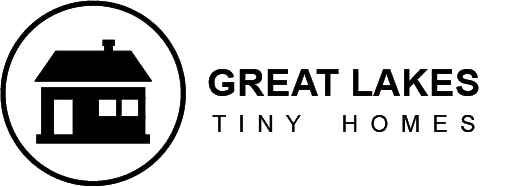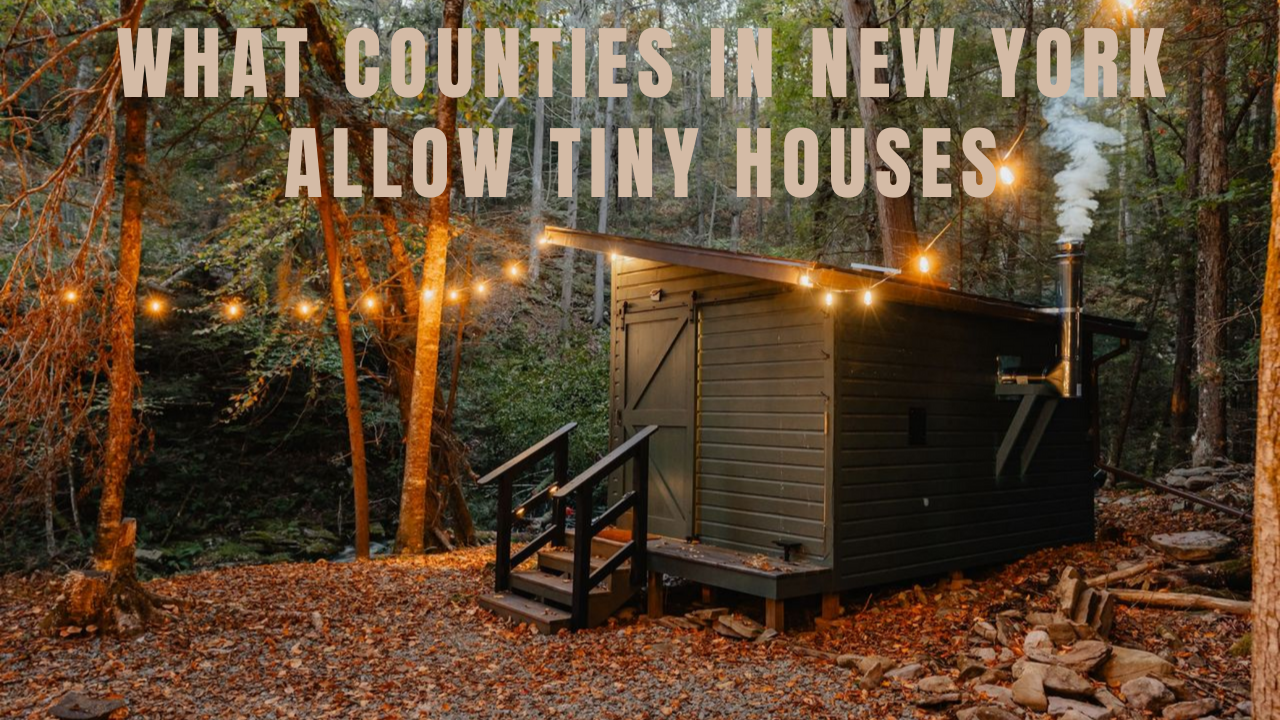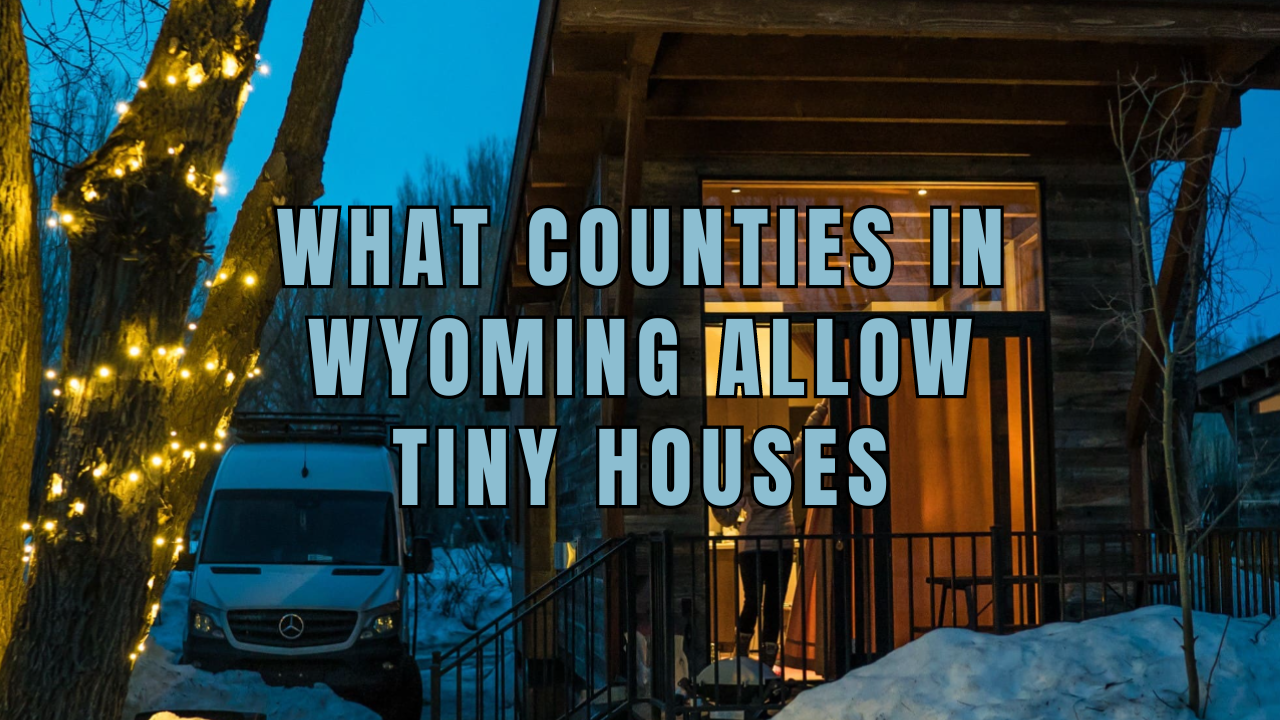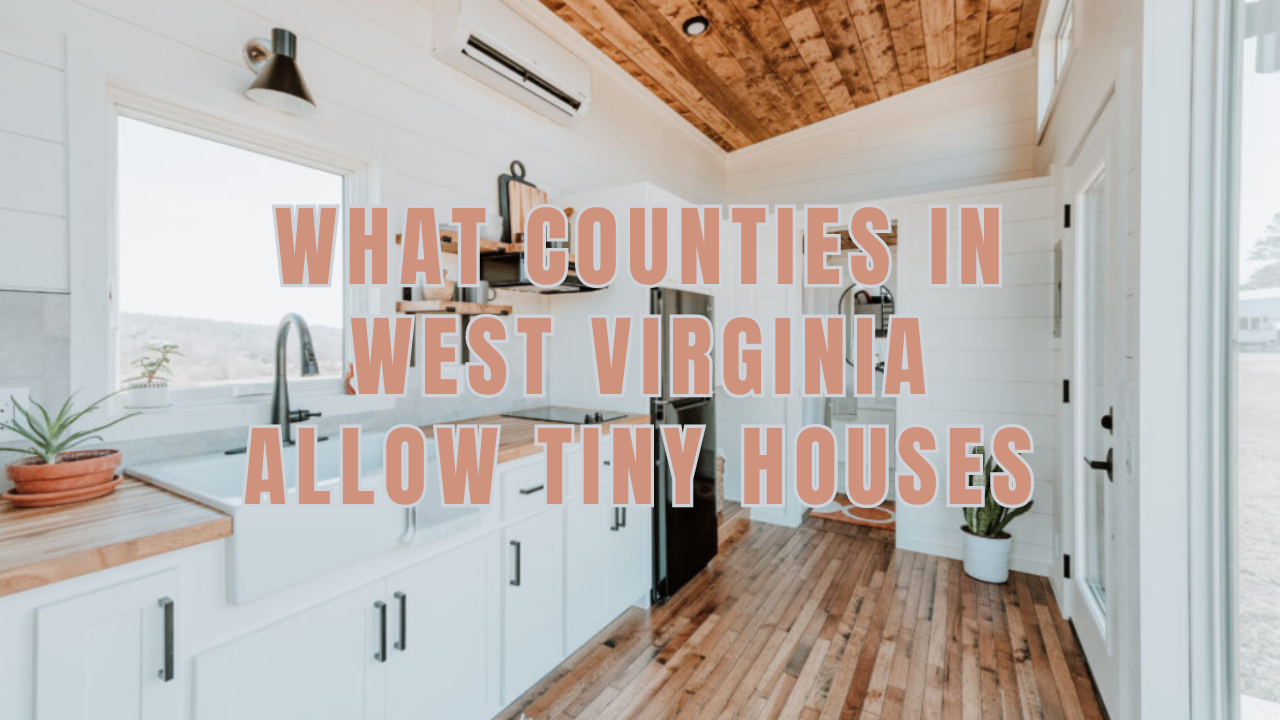People who wish for a simpler, cheaper, and more sustainable lifestyle are drawn to tiny dwellings. States do not; however, all have recognized the increasing popularity of tiny houses as a popular and affordable solution for permanent housing.
Depending on the kind, location, and layout. Tiny house lovers in New York may find both possibilities and difficulties. Here, we will discuss tiny homes’ present legal position in New York, which counties permit them, where to buy a tiny house, and what to think about before building or purchasing one.
Can You Make a Tiny House in New York Your Main Residence?
Yes, you can. However, the state of New York is one of the least friendly states for tiny house living as a permanent situation. The state has to some extent outlawed tiny house living as a permanent living situation, allowing them only as temporary or emergency housing.
Tiny homes, also known as ADUs (Accessory Dwelling Units), are legally allowed in some places in New York State. They must meet some tiny house size requirements, with a minimum square footage of 200 square feet and a maximum of 1500 square feet. The ceiling height requirements are for different areas within the ADU.
ADUs can be rented for a minimum of 30 days, and the setback requirements vary by municipality. New York City issues permits for ADUs on approved lots following state guidelines, and there are limits on utility connection fees for ADUs. A state initiative provides grants to low- and middle-income homeowners to build or upgrade ADUs on their properties.
Tiny House Prices in New York
Multiple factors influence pricing, and each case is unique. As a reference, the average price is $50,000–$140,000, but you may need to add up to your budget for materials, fixtures, and permits. Check out the following tiny houses in New York:
Namaste
It is built to offer versatility and security. Live Large ADUs’ Namaste small house is a gorgeously designed and adjustable ADU shell. The house is saturated with natural light and offers breathtaking views of the vast outdoors thanks to its fourteen huge windows, three glass doors, and two skylights. It is a magnifique option for people seeking beauty and functionality in their ideal house. The price of this cozy home starts at $97,500.00
The Blue
You may walk outdoors to observe the sky and check the weather from the modest covered porch at the entryway. Furthermore, the outside siding and metal roof combine cedar and metal for a beautiful appearance. Fully insulated, with MDF siding inside, the outside and inside colors are customizable. Its base price is $64,400.00

What Counties in New York Allow Tiny Houses?
The tiny house movement is not just about the houses themselves but also about the lifestyle and community that come with them. The growing popularity of tiny homes has led to tiny home communities’ development, which offers a sense of unity and shared values.
If you are considering embracing your tiny house dream in New York, consider these tiny house-friendly places.
Rockland County
ADUs, sometimes called carriage houses, are in towns like Haverstraw as long as they are constructed according to Rockland County regulations.
Greene County
This county offers an enticing opportunity for tiny house-living enthusiasts. The Chenango River Theatre and the Kaaterskill Falls, among other attractions, make it ideal for those seeking a peaceful and picturesque tiny lifestyle.
Always check the specific regulations for each area, as they may vary from one city to the next. Research and consult with the local authorities to understand the entire landscape of the specific rules and requirements.
Broome County
In Broome County, New York, the regulations regarding tiny houses vary based on local zoning laws and building codes. The town of Chenango, for instance, has been known to have discussions about tiny houses, indicating a potential openness to this type of dwelling.
However, it’s important to note that even in counties that are more accepting of tiny houses, there may still be specific requirements and restrictions that need to be met. These can include minimum size requirements, the need for permanent foundations, and requirements for utility connections.
New York Tiny House Laws: Local Zoning Regulations
Ensure you abide by the law and keep your tiny house lawful; check with your local municipality. New York state laws and regulations about small houses are frequently contested and amended.
The Hamptons
While the local zoning laws allow people to live in tiny houses in Easthampton and Northampton, Southampton sees them as ADUs and forbids them.
Buffalo
In Buffalo, the legal landscape is shifting, with some constructors making strides in advocating for the establishment of tiny homes on compact city lots. Although the legalities require individual evaluation, there is a growing trend towards this change.
The statewide endorsement of Appendix Q, a part of the International Residential Code (IRC) safety standards, should simplify the adoption of the tiny house movement.
New York City
These are the key points for tiny living in New York City:
- Living full-time in a Tiny House on Wheels (THOW) is not allowed within the New York City metropolitan area.
- In response to high population density and steep construction costs, New Yorkers are increasingly interested in micro-apartments as an affordable housing solution.
- Micro-apartments are compact, functional spaces tailored to a fast-paced urban lifestyle, similar to tiny homes.
- While real estate in Manhattan, Brooklyn, or Queens is typically expensive, micro-apartments offer a more affordable alternative to city living.
- Some micro-apartments feature shared communal spaces like kitchens and living rooms to maximize the use of limited space.
- In New York City, apartments under 400 square feet are considered micro-apartments, with some being as small as 55 square feet.
- Living in such small spaces requires organization, a minimalist mindset, and a careful selection of belongings, mirroring the lifestyle in a tiny house.
Tiny House Regulations And Rules In New York
Whether you are building a tiny home as a permanent, temporary, or transitional residence, follow the state’s building rules to ensure your home’s safety and structural integrity.
Permanent Structure Rules
New York State has embraced the International Code Council Building Codes (ICCBC), including the Tiny House Appendix Q, which dives into safety construction codes. Accordingly, if you are considering building a tiny house in New York, here are some fundamental guidelines to keep in mind:
- Any room intended for living, aside from the kitchen, must have a minimum floor space of 7 feet in length and width.
- Each tiny house should have at least one distinct bathroom.
- The minimum ceiling height is 6’8”. The bathroom ceiling can be as low as 6’4”.
- Bedrooms or lofts should be equipped with a large window for emergency escape during a fire and a smoke alarm.
- The tiny house should have at least one bathroom with a toilet and a bathtub or shower, with adequate spacing between fixtures. It should also have a kitchen with a sink.
- The house must be equipped with hot and cold water supplies and a heating system.
- Lofts should be accessible via a ladder or stairs.
- There is no prescribed minimum size for tiny houses in New York, but the maximum size is 400 square feet.
- Tiny Houses on Wheels (THOWs) must be registered as recreational vehicles with the New York State Department of Motor Vehicles and can be as large as 400 sq. ft.

Temporary Structure Rules
In New York, the regulations for temporary tiny houses, particularly those on wheels, vary significantly. It is important to note that Tiny Homes on Wheels (THOWs) are not allowed. However, the chances of residing in your tiny home undetected increase as you move further away from major cities.
If a THOW is in your plans, it’s mandatory to register it as a Recreational Vehicle (RV) with the Department of Motor Vehicles in New York State. Bear in mind that you cannot make a tiny house on wheels your permanent residence.
Also, it’s fundamental for THOWs to adhere to RV guidelines on electrical systems, plumbing, and safety measures related to recreational vehicles. Compliance with these standards makes your vehicle safe and suitable for temporary habitation.
Transitional Structure Rules
The concept of transitional structures includes temporary or semi-permanent tiny houses. They fall under the jurisdiction of local zoning regulations, and accordingly, they can vary significantly depending on the location and the local zoning ordinances.
Before making a decision, consult with local authorities or zoning departments.
Where Can I Build A Tiny House In New York?
New York State recognizes the value of Accessory Dwelling Units, which can include tiny homes, and has laws in place to support their development. ADUs can be built as Conversion ADUs, Attached ADUs, Detached ADUs, or Junior Accessory Dwelling Units (JADUs).
Certain counties in New York are more receptive to tiny houses. For example, Haverstraw in Rockland County and Greene County have shown openness to tiny house developments.
For those with a tiny house on wheels, parking options include RV parks and campgrounds, though maximum stay limitations.
Tiny House Communities in New York
For individuals interested in the small house lifestyle and joining a tiny house community, there are tiny home communities in New York that provide distinctive living experiences.
These communities offer a friendly, like-minded group of people who recognize the advantages of modest living.
Think Big! A Tiny House Resort
Just a few hours north of New York City in South Cairo, the Catskill Mountain area is home to the family-run A Tiny House Resort. In addition, fresh seasonal vegetables abound in their gardens, and year-round, visitors are treated to free-range eggs from the hens.
Upstate Tiny Homes at Long Lakes
This upscale year-round park model community, tucked away in the heart of the Adirondack Lakes, provides services and facilities so you may spend more time enjoying your lakeside lifestyle. Living at Long Lake is tempting because of its gorgeous, tranquil surroundings with lots of room, wonderfully designed, distinctive small cottages with private fire pits, and garden spaces, to name a few features.
Boiceville Cottages
There are 140 small homes in this vibrant Brooktondale neighborhood. A local feel to the intergenerational community, where people know and care about one another. Wheelchair accessibility is available in every flat. Because of their low cost and efficient design, tiny homes are an appealingly affordable choice for anybody looking to live a more economical, eco-friendly, and energy-efficient lifestyle.
Tiny House Builders Near me
Without looking for builders nearby, you may find the house of your dreams thanks to Great Lakes Tiny Homes‘ assortment of models and nationwide shipping.
Moreover, Great Lake Tiny Homes is part of the RV Industry Association (RVIA). This accreditation provides tangible proof of the strict production guidelines followed in conjunction with construction, safety, and legal requirements for compact homes.
Do I Need a Certified Builder?
The Recreational Vehicle Industry Association, or RVIA, attests to the home’s compliance with building, plumbing, electrical, heating, and fire safety codes.
Recognition And Acceptance
Having a small house registered by the RVIA enhances its recognition and acceptance by pertinent authorities, including residential zones, insurance companies, and banks.
Insurance
Obtaining insurance for a tiny house is easy with an RVIA certification since it satisfies safety and quality requirements.
Nationwide Access
Any state that allows them allows homeowners to build compact houses with RVIA certification. The RVIA seal guarantees conformity with building and zoning codes.
Financing
With the RVIA certification, additional financing options are available for building or buying a modest home.
Resale Value
Buyers may be more inclined to buy a tiny house with an RVIA certification.
Safety
The RVIA certification on your small house indicates that it satisfies industry safety standards.
FAQs
Is New York Considered a Tiny House-Friendly State?
While New York State does not explicitly prohibit tiny houses, the regulations and acceptance can vary greatly depending on the location. For instance, in some areas like Buffalo, builders have successfully advocated for the construction of tiny houses on city lots. However, in densely populated urban areas like New York City, living full-time in a tiny house, especially one on wheels, is not allowed.
Instead, New Yorkers have shown a growing interest in micro-apartments as an alternative solution to affordable housing. These compact, functional spaces offer a more affordable way of living in the city. They often feature shared communal spaces to maximize the use of limited space, similar to the lifestyle in a tiny house.
In rural areas like the Catskills and Hudson Valley, a trend of tiny cabins and houses used for vacation rentals offers a getaway experience close to nature. These areas are more accepting of tiny houses, making New York a somewhat tiny house-friendly state, depending on the specific location and use of the tiny house.
What Occurs if Zoning Laws Are Ignored?
Laws are not just recommendations; they exist for a purpose. You may be subject to fines and penalties if you construct a small home that violates municipal zoning regulations. The city will often be able to condemn your property and file a lawsuit against you. Some could even insist on the building’s complete demolition.
Is It Legal for Me to Build a Tiny House in My Backyard, in New York?
ADU regulations vary between counties and cities and include requirements for lot sizes, utility connections, setback lengths from property borders, and other aspects.
Ensure you have all the licenses and clearances required before building your small home. If not, you risk facing fines and penalties or, even worse, having your little house razed.
Conclusion
For those looking to live in a tiny house more independently and with less of an impact on the environment, tiny homes are a desirable alternative. However, depending on the design and location of their small homes, tiny house buyers in New York may encounter some legal issues. While some counties permit small homes as extra dwelling units, others’ stringent local building and zoning laws make them impractical.
Therefore, to comprehend the particular criteria and get the required permissions for your tiny house, you must speak with the local municipality’s Department of State.





